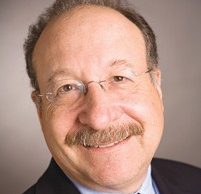
The court battle over the ownership of the Santa Barbara Independent is on the cusp of resolution, with the Second District Court of Appeals upholding a lower court’s decision compelling publisher Randy Campbell to sell his 51 percent stake in the company to Editor-in-Chief Marianne Partridge.
The dispute has its roots in late 2009, when Campbell, who is in charge of the business side of the alternative weekly newspaper, informed Partridge and two other minority shareholders that he intended to sell his shares to Southland Publishing, a Pasadena-based printer that handled the Indy’s press runs and also owned several publications.
That triggered right-of-first refusal provisions in a buy-sell agreement that the shareholders had entered into in 1986 when the newspaper was formed. Under it, the shareholders had the option to buy the company on the same terms and conditions as an outside offer. Partridge contended that she exercised her option to purchase Campbell’s shares, but Campbell argued that the Partridge’s acceptance wasn’t valid because she hadn’t followed the buy-sell agreement’s process correctly.
On that basis, Campbell argued he was still free to withdraw his intention to sell under Southland’s first offer when the printing company made him a sweeter offer that would have doubled his salary. Partridge said that she already had a deal in place and sued to enforce it.
Here’s how the whole thing worked: Technically, the Independent’s corporate body had the first dibs on the shares when Campbell signaled his intention to sell, before any offer was made to the minority shareholders. (The corporation passed on its options).
Just before the board meeting to go over that, Partridge handed Campbell a letter stating that she would buy whatever shares weren’t purchased by either the corporation or the other minority shareholders. He accepted it.
In the appeals court, however, Campbell argued that he still had the right to cancel the first offer from Southland because the buy-sell agreement gave him the right to withdraw at any time before the “options” — with an s! — had been exercised by the corporation or minority shareholders. Because the other two shareholders had yet to weigh in when Partridge made her offer, Campbell still had the right to withdraw, he argued.
The court disagreed. The court found that Partridge’s offer satisfied the overarching point of the buy-sell agreement, even if the process wasn’t followed literally to the letter. The court also found that Campbell’s interpretation would have the “unintended, absurd” result of allowing one minority shareholder to block the other two by merely not responding by the deadline.
“We would be exalting form over substance were we to hold that [Partridge’s] acceptance did not create an enforceable contract merely because [fellow minority shareholders] Parker and Grand-Jean had not yet exercised their options to purchase their pro rata share,” the court wrote.
Hatching new law firms?
We already incubate tech startups. How about law firms?
That’s one new idea that is emerging in response to a new report from the California State Bar’s task force on admissions reform. A draft of the task force’s report started circulating in late March, and it addresses a hot topic: With a fast-shrinking pool of legal jobs and crushing debt loads for new law school graduates, should the bar require practical skills training before admission so that new members have some hope at building a successful firm or solo practice?
So far, the task force has answered in the affirmative. It has suggested a three-step process. One would be 15 units of coursework after the first year of law school focused on practical skills, or else a six-month bar-approved clerkship that serves the same function. Then, either pre- or post-admission to the bar, the graduate would need to put in 50 hours of pro bono services (or “in the field” experience with a licensed practitioner). And finally, there’d be 10 hours of post-admission MCLE hours for new graduates above and beyond those required for older bar members.
The requirements could start to take effect as early as 2015.
“We have no illusions that the State Bar can fashion a new, more practice-oriented training regimen overnight or prescribe exactly what it must look like in every detail. But we are confident that the Bar can establish a regulatory framework that will provide a structure for the organic evolution and growth of such a system,” the task force wrote.
So where are law students and graduates going to turn for all of this additional training? That’s still very much an open question. At least two incubator-style centers have sprung up, one associated with the Thomas Jefferson School of Law in San Diego and another with California Western School of Law. In general, the idea is to provide affordable legal services to low-income clients while giving recent graduates practical experience.
“When the recession began, right off the bat, around 30,000 law jobs vanished,” said Steven Lehat, a Newport Beach attorney who testified before the task force and owns Law Business World, which offers crash courses in the business of running a firm for new lawyers. “Statistically, I can tell you right now that only about 56 percent of law grads are employed by law jobs nine months after graduation.”
• Contact Stephen Nellis at snellis@pacbiztimes.com.






 Print
Print Email
Email
















